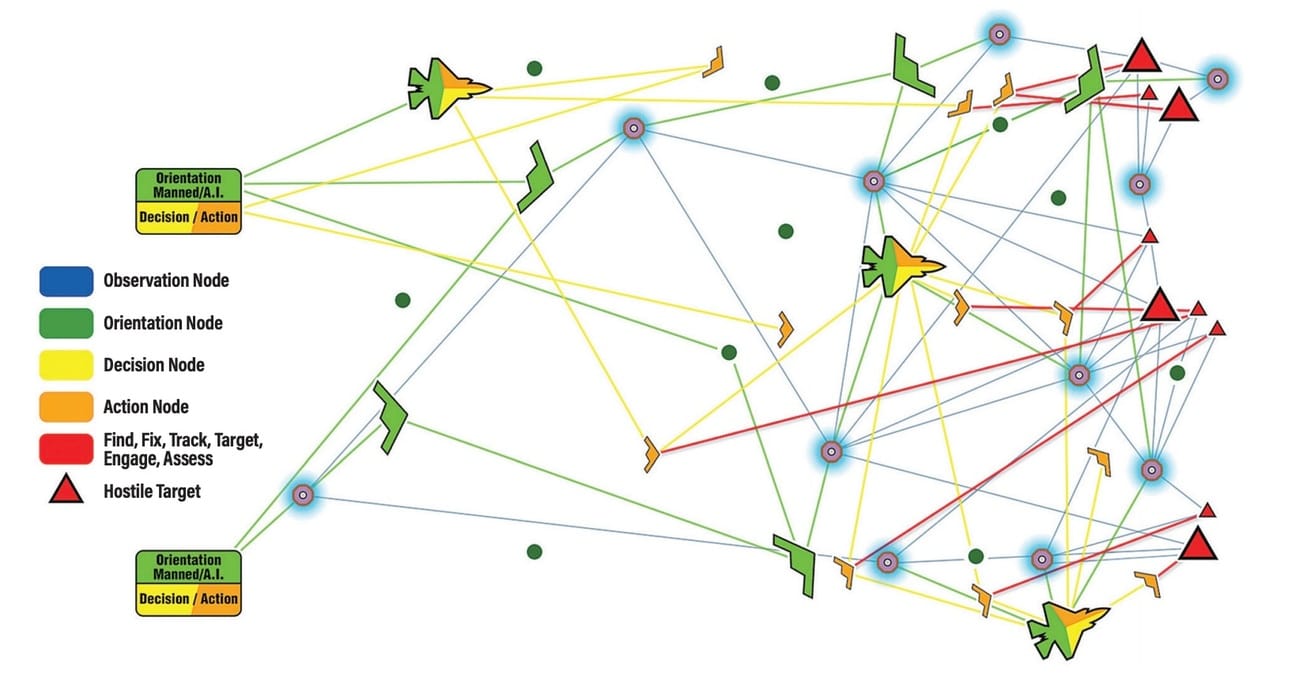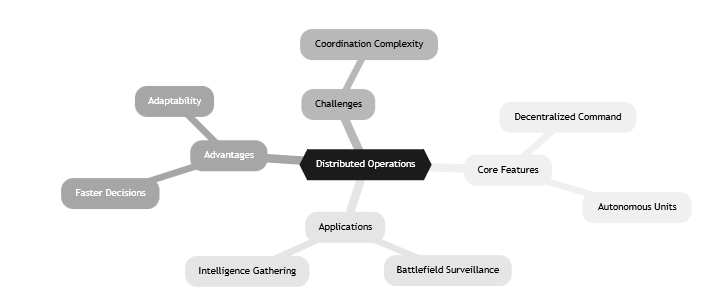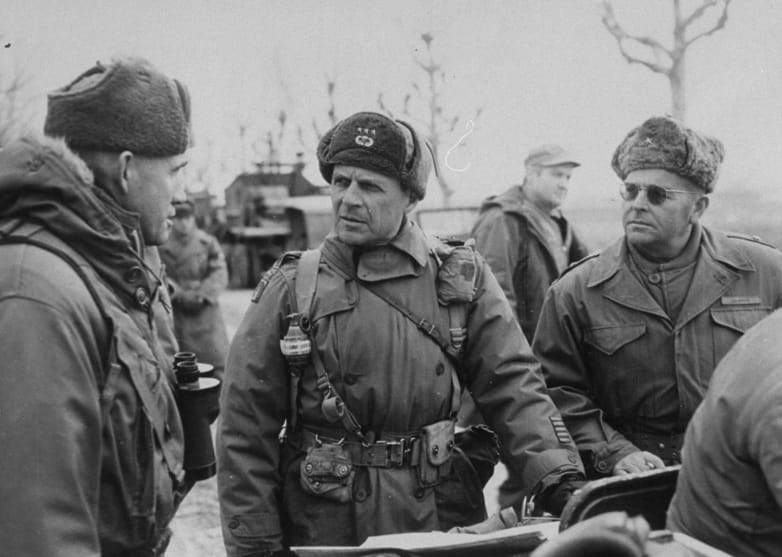- Formidable Function
- Posts
- LP/OP #8
LP/OP #8
Mosaic Warfare, Distributed Operations, and Gray Zone Tactics
Welcome back to the LP/OP, friend.
This newsletter shares insights from the highly pragmatic military methodologies learned throughout my nearly 20 years spent in the military and private sector.
We do so briefly and clearly with respect for your time to give you an edge over your competitors, adversaries, and enemies.
Every week we cover new…
Tactics, Techniques, and Procedures (TTPs)
Inspirational Exemplars
In this edition, we explore several military concepts with practical applications for competition in business and your personal life: Mosaic Warfare, Distributed Operations, and Gray Zone Tactics. Each section provides actionable advice tailored to modern challenges.
Mastering these techniques can provide a strategic advantage in various scenarios, from business negotiations to personal interactions.
Tactic: Mosaic Warfare

*Nodes are simply parts of a system that works with others to get a job done.
Business Application:
The smartest move isn’t building the biggest system, but the most adaptable one.
Mosaic Warfare creates flexibility by combining low-cost, modular systems that can be rapidly reconfigured for any challenge. In business, this means creating agile processes and teams that can pivot when market demands change. By applying this concept, companies like Tesla and Amazon have developed scalable, adaptable systems that dominate their industries.
The key is to focus on versatility, allowing you to respond quickly to whatever lies ahead.
Personal Application:
How flexible is your personal strategy when life shifts unexpectedly?
You can apply the principles of Mosaic Warfare by diversifying your skills and resources, creating a "plug-and-play" approach to your life. Learn new skills that complement your core strengths, enabling you to pivot quickly if your career or environment changes. Build a strong, diverse network of people across industries who can provide guidance or opportunities in areas you might not anticipate needing.
I have three core skillsets for example: security, sales, management.
What are yours? If you don’t have any, even better, you don’t have bad habits, and you can choose something your passionate about to get good at.
The future belongs to those who are multi-skilled and highly adaptive.
Learn More:
Technique: Distributed Operations

Business Application:
Control isn’t about micromanaging - it’s about empowering.
Distributed Operations give teams the autonomy to act independently while staying aligned with overarching goals. In business, this means trusting your regional or functional teams to make decisions based on local knowledge, allowing for faster responses to changes in the market. Companies like McDonald’s use this approach, tailoring offerings and campaigns to local tastes without sacrificing brand cohesion.
By decentralizing authority, you reduce bottlenecks and create a resilient organization.
In the business world, speed isn’t just an advantage - it’s survival.
Personal Application:
Do you trust yourself to delegate parts of your life without losing control?
Embrace Distributed Operations by breaking your personal goals into smaller, actionable pieces that can operate independently. For example, if you’re working toward a career transition, focus separately on networking, skill-building, and financial planning rather than trying to tackle everything at once. Similarly, build independent income streams -whether it’s freelancing, investing, or a side hustle - so no single disruption can set you back entirely.
Independence creates freedom, and freedom builds momentum.
A life built on autonomy is a life built on strength.
Learn More:
Procedure: Gray Zone Tactics

The Gray Zone Tactics of Business
Business Application:
What if you could win without fighting?
Gray Zone Tactics operate in the subtle spaces between peace and conflict, shaping outcomes without direct confrontation. In business, this could mean positioning your brand as a trusted authority through thought leadership, capturing customer attention without ever mentioning competitors. Use tools like SEMrush to analyze your competitors’ weaknesses, then quietly outperform them in areas where they’re lacking, like customer service or product delivery.
The strongest influence often works silently.
The loudest player rarely wins - the smartest one does.
Personal Application:
How often do you let subtlety work to your advantage?
Gray Zone Tactics can be used personally to build your influence without needing to compete overtly. Create a strong personal brand through well-placed articles, conference talks, or mentorships that showcase your expertise. At the same time, foster relationships with decision-makers in your field, providing value to them in ways that make you indispensable.
You don’t have to announce your presence - your actions and insights will speak louder than words.
Influence that doesn’t demand attention commands respect.
Learn More:
Inspiration: General Matthew B. Ridgway
US Army Supreme Allied Commander Europe (1952-1953) Chief of Staff United States Army (1953-1955) |  |
General Matthew B. Ridgway, the driving force behind the U.N. turnaround during the Korean War, stands as a master of operational adaptability, decentralized leadership, and strategic subtlety. Taking command in the face of a near collapse, Ridgway transformed his forces into an agile and cohesive machine, embodying the principles of Mosaic Warfare, Distributed Operations, and Gray Zone Tactics at every turn.
Mosaic Warfare in Action:
Ridgway’s reorganization of the U.N. forces after taking command showcased his ability to assemble flexible, low-cost components into an adaptable whole. For instance, he prioritized integrating air, artillery, and infantry units into smaller, dynamic task forces that could act independently to counter Chinese and North Korean tactics. This operational modularity enabled Ridgway’s forces to adapt quickly to the harsh terrain and unpredictable enemy maneuvers, striking effectively without overextending their resources.
Business Translation: Ridgway’s method mirrors how a company might integrate cross-functional teams—such as marketing, data analytics, and product development—to quickly address new challenges like emerging competitors or shifting market conditions.
Distributed Operations for Decentralized Command:
Ridgway understood that centralizing decision-making on a chaotic battlefield would slow down operations and cost lives. He empowered field commanders with the autonomy to act independently within a clearly defined strategy. For example, during the recapture of Seoul and subsequent counteroffensives, Ridgway’s trust in his subordinates allowed them to execute bold maneuvers tailored to their local conditions, preventing a fragmented response across different fronts.
Business Translation: Just as Ridgway leveraged distributed operations, modern companies can empower regional offices or project leads to make decisions that align with the company’s overarching goals, enabling faster responses to local markets or crises.
Gray Zone Tactics for Psychological and Strategic Impact:
Ridgway was a master of shaping outcomes without direct confrontation. He strategically targeted enemy supply lines and exploited the Chinese and North Korean forces’ reliance on morale by leveraging propaganda and psychological warfare. By dropping leaflets that highlighted the strength and resolve of the U.N. forces, Ridgway sowed doubt among enemy troops, reducing their will to fight. Additionally, his emphasis on logistical superiority ensured that his forces always had the resources to outlast the enemy’s efforts.
Business Translation: This is akin to using subtle tactics such as thought leadership or targeted content campaigns to shift consumer perception and weaken a competitor’s influence without direct competition. For example, by highlighting superior customer service or ethical practices in marketing, a business can quietly erode a rival’s reputation without mentioning them by name.
Ridgway’s mastery of these principles enabled him to reshape the course of the Korean War. By combining operational adaptability, decentralized execution, and psychological influence, he turned disarray into decisive victories. His legacy proves that success comes not from overwhelming strength alone but from understanding how to assemble, empower, and strategically maneuver every resource at your disposal.
In both war and business, the leader who adapts faster and smarter always wins.
Outbrief
Adapt swiftly to changing conditions, empower others with decentralized decision-making, and use subtle influence to shape outcomes in your favor.
Understanding these TTPs can enhance your effectiveness and give you an edge.
Mosaic Warfare
Distributed Operations
Gray Zone Tactics
General Matthew B. Ridgway successfully employed these principles with mastery, transforming a disorganized force into cohesive and resilient units capable of delivering effective combat power. Reflect on Ridgway’s ability to adapt, delegate, and outthink his adversaries, know that these concepts are just as available to you to outduel your own challenges. By implementing these strategies, you can create systems that are agile, teams that are empowered, and an influence that is quiet yet powerful.
Engage with these principles and note how each small victory builds your capacity for even greater success and formidability.
Thank you for reading. Genuinely.
— Ryan “DQ” DeQuiroz —